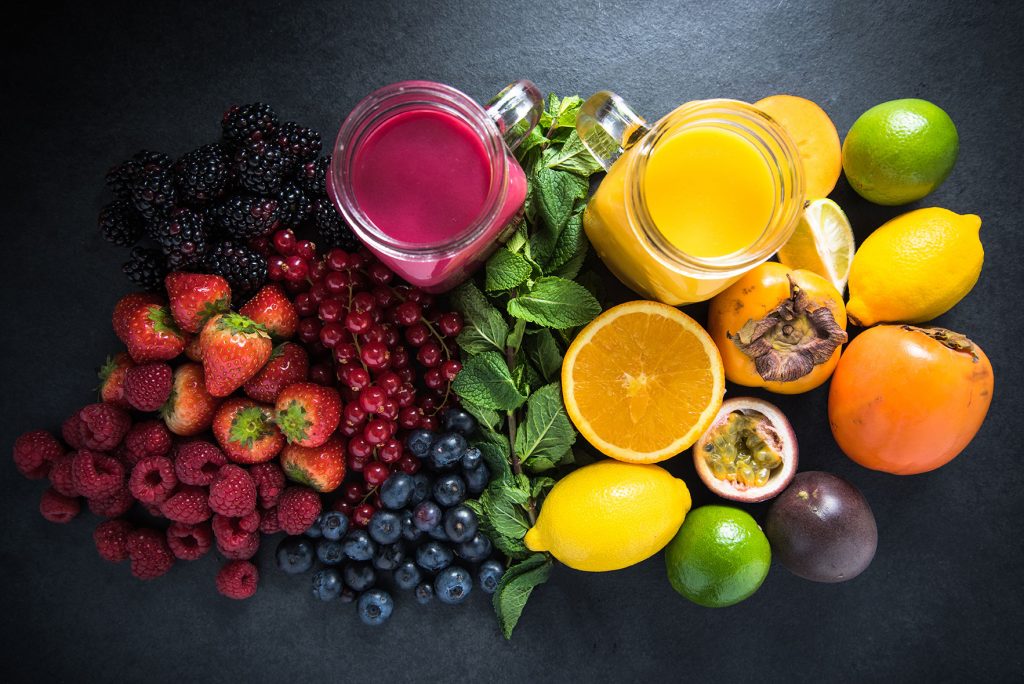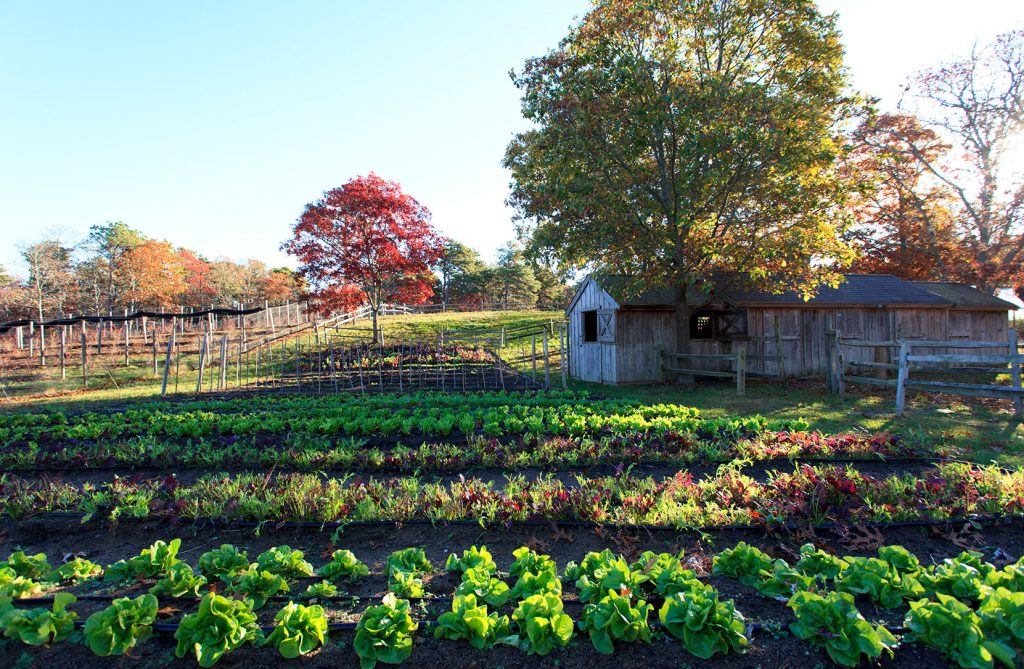Farm to Fork

By Lauren May Malis
As the “Taste of America” evolves, Americans’ taste buds are developing, too. Dynamic transformation marks today’s gastronomic landscape, and we find ourselves at a critical culinary crossroads. One path leads us towards a fast-food future which threatens to heap our collective plate with the health issues, environmental concerns, and social consequences we have already begun to taste.
The alternate path, however, leads us towards a sustainable, balanced, and healthier future—one flavored with a celebration of diversity, a respect for tradition, and an eager exploration of the exotic. Along this path, we will discover supermarkets with delicious foods produced by growers from around the globe, as well as by our nearest, most responsive—and environmentally responsible—family farmers. This world of producers has the ability to provide us with a palette for our palates that includes foods rarely available just thirty years ago—foods that can inspire us, titillate our taste buds, and give us true cause for sensory celebration!
And when our interest in fresher foods leads us to supporting our local farms, our local economies benefit, too. The thriving Farm to Table movement gives those of us who don’t grow food a chance to buy directly from those who do. These purchases are actually investments in small, local, food-production businesses, investments which strengthen the economies we live within. Farmers Markets have popped up in various locations across the county.

In addition to the health of our bodies, the wealth of our economies, and the pleasures of the plate, the choices regarding responsible food production raise other concerns. Sustainable food is as important as air or water. Running out of food will create the same disastrous consequences as running out of potable water or oxygen. Supporting the Farm to Table movement, which, in turn, so strongly supports local agriculture, will help us avoid such a disaster and keep our families fed—and fed well, at that.
For so many reasons, then, as we stand at this culinary crossroads, we must choose our next steps wisely. Sure, the fast-food highway may appear the more convenient option. But if we consider all that’s at stake, we might realize there’s another way, a road that leads us towards good food and the slow, significant processes that produce it. If we travel that road, we, along with a growing number of Americans, affirm a genuinely respectful, oh-so-delectable and demonstrably sustainable path of consumption—a path which starts in our own backyards.
RISE OF SUSTAINABLE AGRICULTURE AND ORGANIC FOOD
On the grounds of the White House, against the imposing backdrop of the Washington Monument and the U.S. Capitol, symbols of American political might, First Lady Michelle Obama grows a garden—an organic garden—and speaks of the ways that America’s young people can benefit from an up-close-and-personal understanding of the origins of the foods they eat. “Healing” and “regenerative” are the powers she assigns to the knowledge children can accrue by learning how to cook foods they have grown themselves.
The goals of a garden-to-kitchen education project also include teaching children to develop a taste for healthy food, which, in turn, can foster their desire for life-long good health—and all the vitality, energy, and mental agility that accompany it. And, in the process of raising and preparing nourishment for their bodies, young people find their minds nourished, as well, since the tasks associated with cooking and gardening can create a sturdy foundation of skills for them to build upon in their later lives.
But the perks of growing, preparing, and enjoying healthy, sustainably-produced foods are not limited to young people. As savvy restaurateurs join the Farm to Table movement, they are partnering with local growers to serve their patrons the most memorable meals based on only the freshest, most enticing, most environmentally responsible ingredients.
Here in Palm Beach County, chefs and farmers are on it. They are forming collaborations that create fresh, delicious menus for South Florida diners.
THE RISE OF THE CHEF
Thanks to the rise in popularity of cooking shows and “foodie” blogs and publications, the American public now views the role of chef with a greater respect than has ever been the case before. Now, what chefs do becomes fashion. Chefs visit small farms in search of prime ingredients, and foodies, taking note, head to the closest farmers’ market.
In their quest for the best, chefs can create dynamic relationships with local growers, relationships that generate a greater variety of fresh ingredients as local farmers respond to the needs of local kitchens. It is local producers, who, working hand-in-gardening-glove with local restaurateurs, provide the excellent, fresh ingredients needed by chefs to prepare world-class cuisines. This creates a full-circle partnership that benefits every participant in the Farm to Table game.
MULTI DIVERSITY AND REGIONALISM
Today, in addition to vegetable farms and fruit orchards, we have seen an increase in the availability of sustainably produced herbs and spices, sprouts and honey, pigs and poultry, eggs and dairy. Across the nation, these and other foods representing America’s cultural diversity are increasingly available to chefs and grocers who seek to feed the soul of the country as well as the bodies of its people.
This feels right. It feels like going home — to a home that most of us 21st-century urban and suburban dwellers have visited only in books, movies, or our grandparents’ memories.
Farm to Table, and all it implies, returns us to our roots. While it may seem a leap to some, it’s a leap to a system that makes profound sense. It’s as simple as knowing where your food comes from. As simple as having a relationship with the farmer who comes by once a week in dirty boots, and knowing that what you will be serving that night was in the ground that morning.

